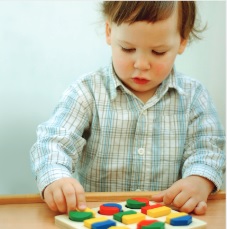Children demonstrate their capacity to understand mathematical concepts at a very young age. Break a cookie in two and ask a young child which part of the cookie he/she would like to eat; he/she will most likely pick the larger piece, demonstrating he/she is capable of understanding the concept of “more and less.”
According to the National Council of Teachers of Mathematics (NCTM), developing a strong foundation in mathematics is essential for preschool students. In fact, experts agree the earlier a child understands that math is an important part of life, the better. The more skilled a child becomes at early math skills, the more likely he/she will succeed in school. The NCTM suggests that a high quality program for young children includes a significant amount of mathematics.
The environment of The Creative Way shall encourage students to take on challenges and to be active learners in mathematics.
Math skills will help improve
- Creativity
- Logical and critical thinking
- Collaboration
- Communications
- Students will develop
- Reasoning
- Problem solving
- Concentration
- Perseverance
Children’s understanding of mathematical concepts requires
- Using concrete objects
- Using vocabulary
- Plenty of time
- Linking the math to everyday experiences
In Mimi’s Place classroom children will gain an understanding of mathematical concepts – size, quantity, shapes, patterns, sequence, space and categorization – through hands on, active, repetitive and playful experiences.
Objectives:
- Sorting objects – recognizes similarities and differences in objects (e.g., putting away toys requires sorting).
- Patterns – recognizes patterns (e.g., red, blue, red, blue…what comes next?).
- Compare properties – recognizes size, height, weight and color.
- Counting from 1-10 – uses vocabulary (e.g., I ate three crackers).
- One-to-one correspondence – counts objects, naming one number for each object.
- Countenance – knows what comes next without recounting.
- Ordinance – learns what is first, second, third, fourth…last.
- More/less – learns addition and subtraction by one (e.g., What is one more than 3? What is one less than 2?).
- Position, direction, distance – identifies under, next to, behind, on, underneath, the end, near, far, short and long.
Mathematics has many dimensions, whether at the level of a preschool child or the level of a more advanced learner. In preschool, a child should explore these dimensions—number sense (e.g., the numeral “3” represents three objects; 3 is more than 2 and less than 4); geometry (patterns and shapes); measurement (size, amount, distance); spacial relations (in front of, behind, over, under, near or far); and the language of math (more than, less than, equal to). Mathematics should not be taught as a stand-alone concept; it should be acknowledged as an integral part of our everyday lives.
TIPS FOR TEACHING MATHEMATICS
- Make math “real.” Teach math in the context of everyday lives.
- Remember and teach that math is more than numbers.
- Teach math across the curriculum, not as an isolated subject.
- Individualize math instruction to the children’s needs, build upon what they already know.
WEBSITES WHERE MORE ACTIVITIES CAN BE FOUND


Recent Comments